Pictured: Oak-loving Trich (Tricholoma dryophilum)
Aaron Tupac is the organizer behind Exploring the Mycoverse, a community science project dedicated to fungi and hosted by Arlington Garden. Tupac-Thompson organizes “fungi reading discussions, fungi film screenings, fungi forays, fungi feasts … all to connect fungi-curious folks with each other and fungi.” The following interview is a wide ranging discussion of fungi and fungi-plant relationships. It been edited and organized for clarity and length.
Andrew Jewell (AJ): Hello Aaron! You organize and facilitate the local community mycology group called “Exploring the Mycoverse.” What is the Mycoverse?
Aaron Tupac (AT): Okay, golly gosh, I will probably go off on some of these topics … it’s hard for me not to!
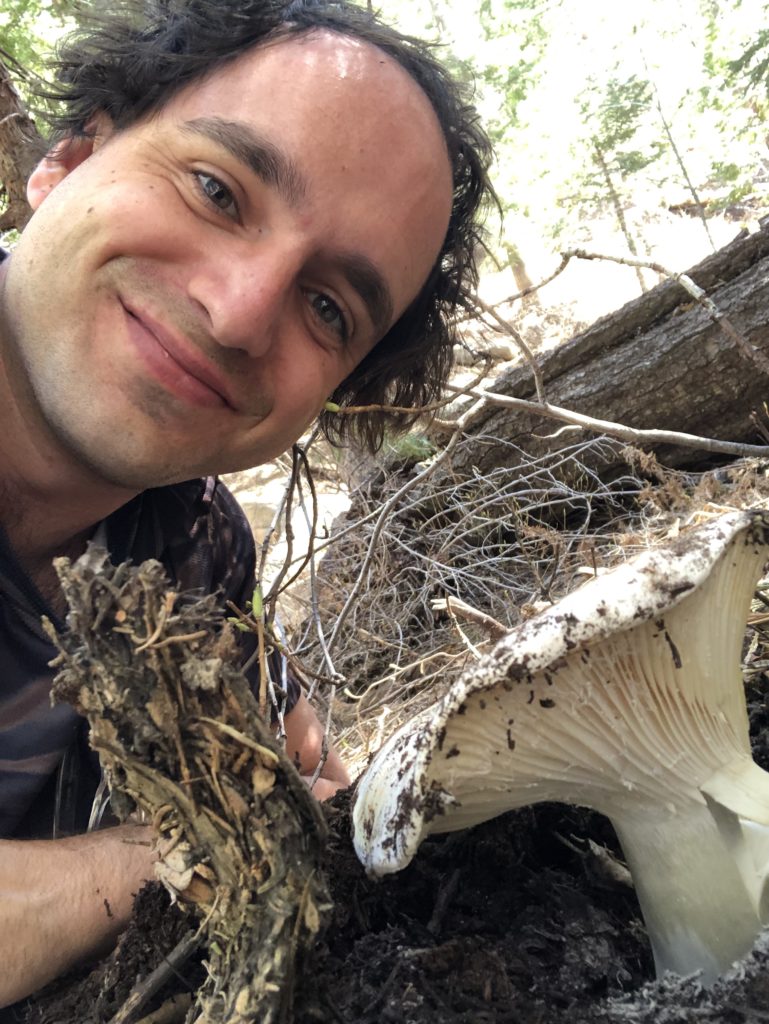 AJ: I would love to facilitate you going off on the topics that you care about! Everyone seems to be passionate about everything in the age of self-marketing, but a lot of things in the world are worth being passionate about, and fungi are definitely one of those!
AJ: I would love to facilitate you going off on the topics that you care about! Everyone seems to be passionate about everything in the age of self-marketing, but a lot of things in the world are worth being passionate about, and fungi are definitely one of those!
AT: So, the “Mycoverse” is a term coined by the North American mycologist Paul Stamets, to describe how life on earth has its origins from fungi. For example, it is thought that plants moved on to land over 450 million years with a fungal symbiotic relationship to harvest nutrients from the land in exchange for sugars produced by the plants’ ability to photosynthesize. It’s an ancient relationship. Everywhere we look we are surrounded by fungi. We are entangled in the mycoverse: the world co-created by fungi. I can talk about this stuff all day … !
AJ: What about being into mushrooms in Southern California? Isn’t it too dry for mushrooms?
AT: Most people don’t think to go looking for mushrooms in Southern California, but they do exist! Just last month I went up into the San Gabriel Mountains up to where the snow was melting and found a species of mushroom – Subalpine waxycap, Hygrophorus subalpinus (pictured above)– that had never been documented on iNaturalist this far south in Southern California. There’s so much exciting research and conservation work to be done.
AJ: Did you hunt for mushrooms as a child? Did you have (or do you have) a favorite fungus?
AT: It’s hard to say which is my favorite fungus. I can say one of my favorite to teach folks about since it’s very common in our area, is Schizophyllum commune, Split-gill fungus. It currently can even be found in Arlington Garden year round on the decomposing hugel logs in the three sisters garden! On fungi forays I love introducing folks to these shelf-like mushrooms that grow on dead trees. They look rather alien with fuzzy textured caps and gills that split when the mushroom dries out.
Also fun fact – Schizophyllum commune (pictured below) has 23,328 distinct mating types, akin to what we call sexes. It’s pretty much the ultimate queer, non-binary fungus. As a non-binary queer person, it’s important to me to share the queer stories of our more- than-human neighbors.
Pictured: Split-gill fungus, Schizophyllum commune is the most wide-ranging fungus on earth.
AJ: How does that work? Do they all produce offspring with one another or …?
AT: Yeah! They do that for genetic diversity. Schizophyllum commune is found in many different places; across its wide range, it has evolved to digest many different kinds of dead wood and to break down different chemicals within them.
AJ: That’s fascinating. So it has evolved to have so many different sexes in order to – at least in part – be more adaptable and plastic across its distribution?
AT: In a sense, yes. Fungi are incredible! As I mentioned, they are thought to have brought plants onto the land!
AJ: As a lover of plants, thank you fungi! What was it about mycology and fungi that initially captured your interest?
AT: It was my interest in the climate crisis that led me down the proverbial Alice-in-Wonderland rabbit hole into fungi. Given my science communication and arts background, I found the climate crisis to an extremely important issue to me. But it took me years of soul searching to figure out how to approach the massive existential issues of the climate crisis. Learning the stories of symbiosis, like the ones of lichens and mycorrhizal fungi, have given me hope that we can learn to live together, even across species boundaries.
If two completely different kingdoms of life can figure out how to work together, like fungi and plants have for millions of years, then I think we can learn how to live together with our more-than-human neighbors.
Pictured: lichens are composite organisms made up of algae (or photosynthesizing cyanobacteria) and fungi.
AJ: Let’s focus on these relationships for a moment. What sorts of mutually beneficial relationships do plants and fungi have with each other?
AT: The vast majority of plants on Earth have evolved to form relationships with underground networks of mycorrhizal fungi. The term “mycorrhiza” is composed of “myco” meaning “fungi” and “rhiza” meaning “root” in Greek, and it literally means “fungus root.” Mycorrhizae (plural for mycorrhiza) live in the soil and form connections to the roots of host plants.
In fact, recent advances in imaging technology have shown that, in plant roots, there are just as many mycorrhizal fungi cells as there are plant cells. The root itself just houses them, providing the mycorrhizae with an interface to the rest of the organism.
AJ: Can you say a little bit more about what plants get from mycorrhizal fungi and fungi get from plants? A little earlier, you mentioned that fungi helped bring plants onto land by providing them with nutrients in exchange for sugars?
AT: These fungi are a bit like our digestive systems but turned inside out! They are totally immersed in their food, eating whatever they’re in and breaking it down with their enzymes. In particular, fungi can break down rocks and organic materials to release things like phosphorus and other nutrients that plants need to survive. The fungus share these mineral nutrients with plants in exchange for sugars. Plants can share up to 70% of their sugars with fungi!
In a “Three sisters garden” for example, which traditionally includes beans, corn, and squash, the “sisterhood” (the reciprocal relationship) isn’t only between the plants! The plants also have mutually beneficial interrelationships with mycorrhizal fungi! The plants eat sunlight and the fungi eat rocks and organic materials …
AJ: … and then they exchange!
AT: Yeah! In addition to mineral nutrients, mycorrhizal fungi can also share water from places that roots can’t reach. For instance, there has been some recent research on how Joshua trees get enough water to survive in their extremely dry habitat: part of the explanation for this accomplishment is that the mycorrhizal fungi associated with the roots of Joshua trees are a lot like tiny hairs. They can get into cracks and crevices that larger plant cells and roots cannot, hence they are able to absorb water – and share it – from places that plants cannot access!
One of my jokes these days is that mycorrhizal fungi are the O.G. Robinhood. They are the re-distributors of resources from places of abundance to places of scarcity. In Susan Simard’s work, discussed in Finding the Mother Tree, she discovered that old trees can — when they’re dying or caring for their young — give out sugars to other plants through these mycorrhizal networks. It’s really inspiring.
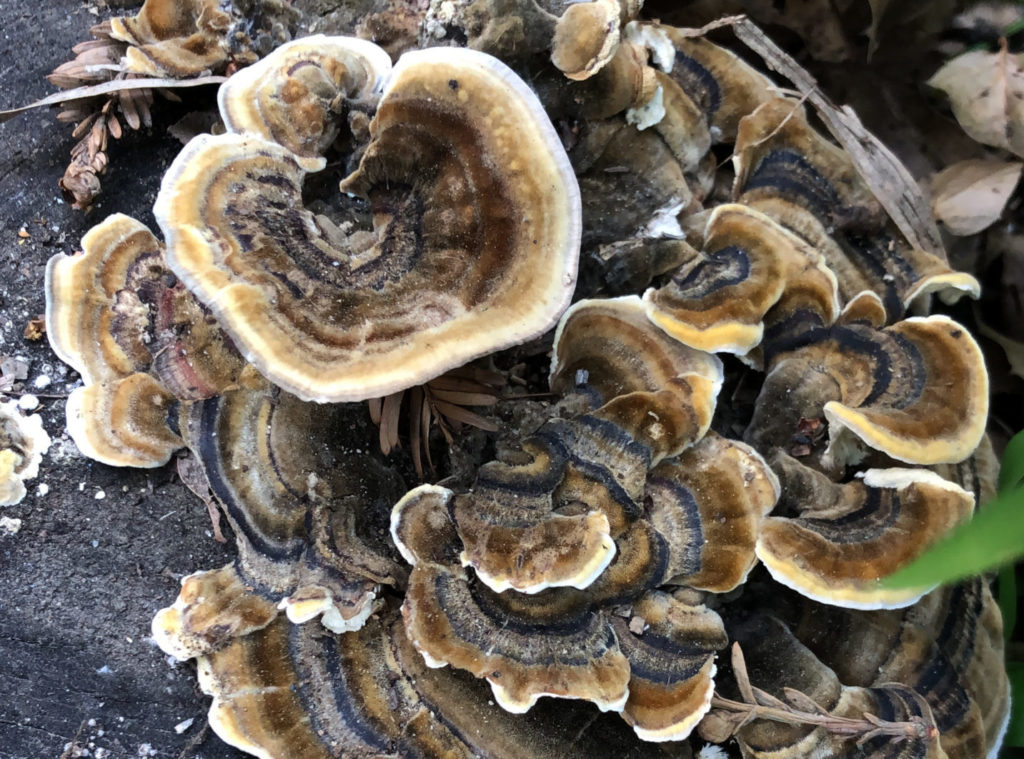
Pictured: the beautiful Turkey tail fungus (Trametes versicolor)
AJ: All of the symbiotic relationships you have mentioned so far seem mutually beneficial. But are there times when they’re not good for everyone?
AT: For 100 years it was thought that symbiosis exclusively took place in lichen, between algae and fungi. It was not until recently that we have expanded the definition of symbiosis to include a whole spectrum of other — not necessarily mutually beneficial — relationships. Some of the main categories of symbiosis that ecologists are working with now are (i) mutualism, which is found in lichens and and some mycorrhizal relationships; (ii) commensalism, which is when species work together, but there doesn’t seem to be a net benefit, they’re just “intimate strangers” to use a phrase from Lynn Margulis; and (iii) parasitism, which we also can find in some plant and fungi relationships, such as with Snow plants (Sarcodes sp.)!!
You can find Snow plants on the forest floor up in the mountains, and what’s striking about them is that they are bright red plants! The number one thing about plants, as you learn in biology, is that they eat sunlight, and they use their green chlorophyll to do it! But these snow plants are totally red. They lost their chlorophyll, and instead they solely rely on parasitizing existing ectomycorrhizal relationships and eating the sugars from those without giving anything back.
Pictured: Snow plants (Sarcodes sp.) steal nutrients from subterranean mycorrhizal networks.
AJ: Are there invasive fungi species?
AT: Yes. We don’t have a lot of knowledge pertaining to which fungus species are native to our region. Not until recently have we gotten around to even documenting which mushrooms currently live here! LIke I mentioned earlier, just last month I was the first to document on iNaturalist some mushroom species that had [heretofore] never been observed in this region!
AJ: That must feel great, but I imagine that you might simultaneously worry that you’ve just discovered the tip of an invasive species iceberg …
AT: Or, alternatively, whether this is the last of its species in this area! It’s very humbling.
Native mycobionts are really important to native plants. When we landscape with invasive plant species or non-native species, these plants only have relationships with one or two fungal species. In contrast, when we look at native species’ soil samples, we’re seeing up to a hundred different types of mycorrhizal relationships or fungi present.
AJ: Are invasive fungi a threat to existing native fungi and plants in California?
AT: That is the assumption. We do know things like the death cap, Amanita phalloides – a deadly poisonous mushroom responsible for 90 percent of deaths related to mushroom poisoning worldwide – is originally from northern Europe. It was brought to North America from European tree imports. But yes, we’re thinking that non-natives could be displacing existing [native symbiotic] relationships.
I’m even skeptical of people in Central California who are trying to cultivate truffles in the wild or on farms because the fungi could spread. And, for the same reason, I don’t recommend buying any general purpose mycorrhizal products for gardening. Instead, I suggest supporting your local native plant nursery where you can get native plants already inoculated with native fungi.
AJ: When I was a young child, I was terrified of the mushrooms that I found in my family’s lawn because I thought that they were poisonous. I think many gardeners in the US have similarly negative views of mushrooms because they are seen as harbingers of death and decay. Mushrooms or molds growing in the yard are usually removed and not celebrated! Is this negative perception of fungus something that you have encountered? I gather that this perception is unwarranted – but what is a better view for a gardener to have?
AT: I was led to believe the same! I was told to pick them in our yard to get rid of them! Now I’ve learned picking them ironically helps spread their spores. Fungi are quite the resilient stubborn type.
“Dear Gardeners – Mushrooms are a sign of an ecosystem completing its life cycle. Fungi are foundational to healthy soil, as many farmers are learning today to use compost, to plant cover crops, and to stop using fungicides/herbicides/insecticides. Fungi were here long before us and will outlive us. So it’s best if we learn to have a healthy relationship with them.”
AJ: Apparently (but not really) at odds with what I just said, there also seems to be a surge of positive interest in fungi in popular culture (a fungal counter-culture). Do you think that is correct? From your experience with Exploring the Mycoverse and Los Angeles Mycological Society, what do you think is driving this interest?
AT: Fungi are indeed experiencing a resurgence of interest, and for good reason. I think this is happening due to a longing our society is experiencing related to feeling disconnected and alienated. Alienated from each other. Alienated from the living world. It is as if we are all waking from a bad dream, collectively questioning, “wait, how do we live together again?”
I think fungi can teach us new mythologies about the interconnection of all life. When you start learning from fungi, you begin to realize everything is in relationship with each other. Our survival is based on symbiotic relationships. It’s truly dizzying and awe-inspiring at the same time. Mycology is also a relatively new field of study. Of the 2-4 million species of fungi that exist, only 150,000 have been described by science. Most fungi don’t have a name! It wasn’t until in the past fifty years fungi were given their own taxonomic kingdom, they were previously lumped in the same kingdom as plants and studied in botany departments. Today, mycology programs in universities are just being founded!
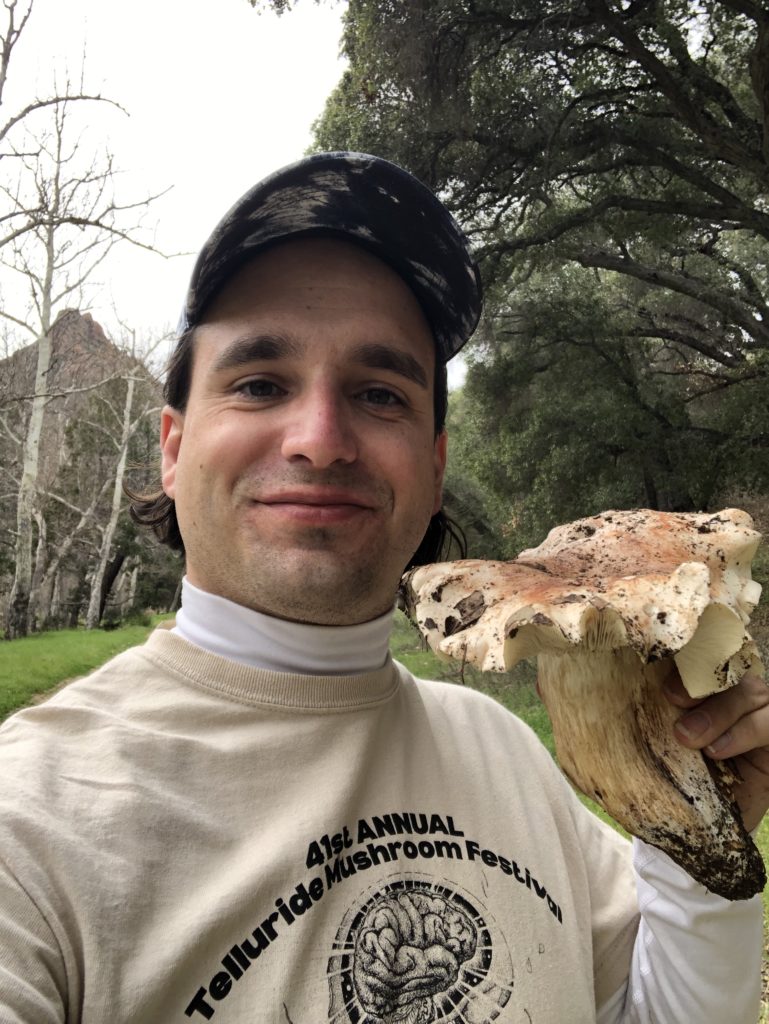 AJ: Earlier I mentioned your community science group Exploring the Mycoverse: what led you to start this group? And what sort of things do y’all do?
AJ: Earlier I mentioned your community science group Exploring the Mycoverse: what led you to start this group? And what sort of things do y’all do?
AT: Learning about fungi has brought a great deal of joy and meaning to my life recently. To share this gift, I organized Exploring the Mycoverse through our local Los Angeles Mycology Society!
This community building project, Exploring the Mycoverse, explores the many ways fungi teach us about the inextricable interconnectedness of all life. We do in person discussion events in Los Angeles including fungi reading discussions, fungi film screenings, fungi forays, fungi feasts – we do fungi fun! All to connect fungi-curious folks with each other and fungi.
AJ: What does a typical meet-up look like?
AT: We meet at Arlington Garden every other Monday, roughly twice a month. Currently, we’re reading Braiding Sweetgrass by Robin Wall Kimmerer. Our meetings are usually a circle discussion about a fungi-related book or some other form of media.
AJ: I saw on Instagram that for one Exploring the Mycoverse meeting you brought some sort of mushroom tonic, and I was very curious what it was…
AT: A number of us from the group visited the local farmers market in Studio City and bought some truffles and some pickled mushroom elixir. It was literally just pickled mushrooms and vinegar, but it tasted surprisingly really good.
AJ: I’m definitely going to look up the seller. I love pickles! I like mushrooms. And I’m at the very least … intrigued … by elixirs, so it’s a good combination. Thank you for letting me use this interview to add to my shopping list! … I was reading a few months ago about an experimental bioremediation project in Los Angeles that was using fungi for soil revitalization at brown sites. What role is fungus thought to (I am not sure how well-established the science is here) play in projects like these?
AT: I’m really glad you asked this question. Mushroom foraging isn’t my main jam; what I am really interested in is the cultural aspects of fungi and healing the land. And Los Angeles is on some seriously damaged land.
Thankfully, there are a lot of innovation here, including the first large, major academic project to test whether “myco-phyto” (“myco” meaning fungus and “phyto” meaning plant) remediation works! This topic has made for some good TED talks, but no one’s done the institutional testing to show how to make it work!
The scientist Daniella Stevenson, from UC Riverside, is leading this project at toxic sites in LA containing a lot of heavy metals. She is using native fungi in tandem with native plants. The goal of myco-phyto remediation is for the fungi to break down the dangerous minerals and for the plants (and fungi) to take them up with the result that over time it will slowly improve the soil. This project has incredible potential, and I’m excited for the results to be published.
AJ: Do you have any advice for people looking to start up their own community science projects like Exploring the Mycoverse?
AT: [When setting up Exploring the Mycoverse] the first thing that I did was reach out to folks who were already into fungi by using internet searches and looking through books. I also joined my local mycological society. This was step one. From there, I channeled my enthusiasm into creating a reading group, and so on.
My advice for someone looking to start their own community science group is to go through their local institutions and figure out who and where you can nerd out with fellow lovers of the same thing! I think people often wait for someone to organize them, but if there’s some community that you can’t easily find, and that you would like to be part of, just make it happen! Find some organizations and reach out!
Pictured: Western Jack-o-Lantern glows in the dark (Omphalotus olivascens)
SPEED ROUND
AJ: What book should people be reading?
AT: The best book on fungi – Entangled Life by Merlin Sheldrake (but also Braiding Sweetgrass by Robin Wall Kimmerer).
AJ: What place should people be visiting?
AT: Their local forest or garden!
AJ: What mushroom should people be eating?
AT: Mushrooms from their local farmer’s market. The mushrooms that you see at the grocery store today are [mostly] just one species of mushroom [Agaricus bisprus] at different stages of its development!

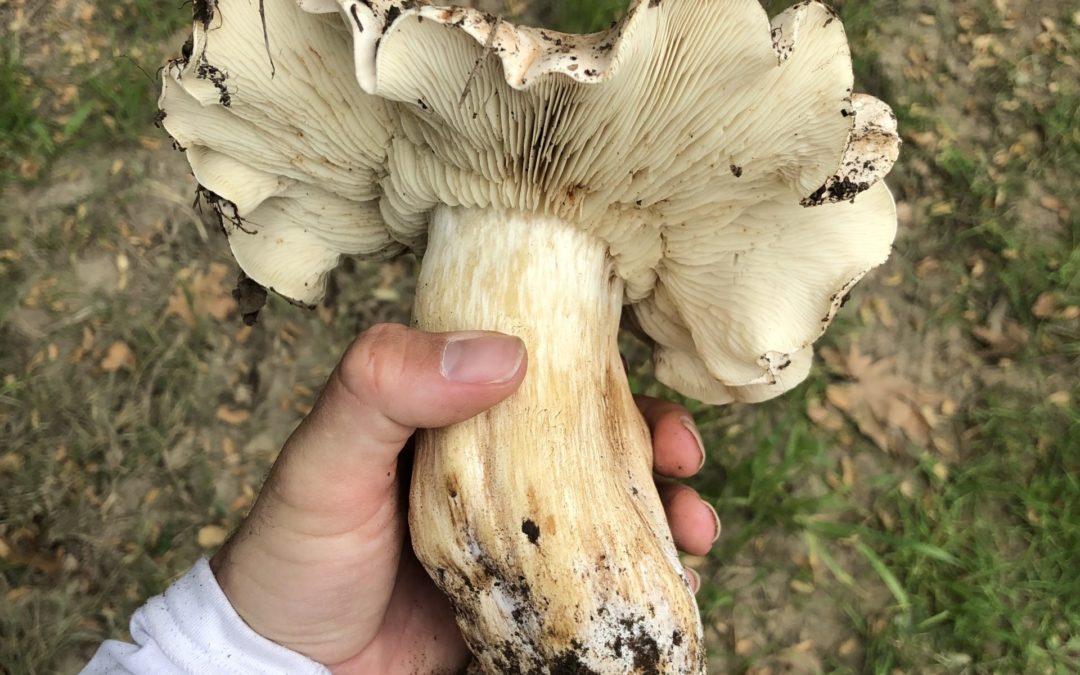
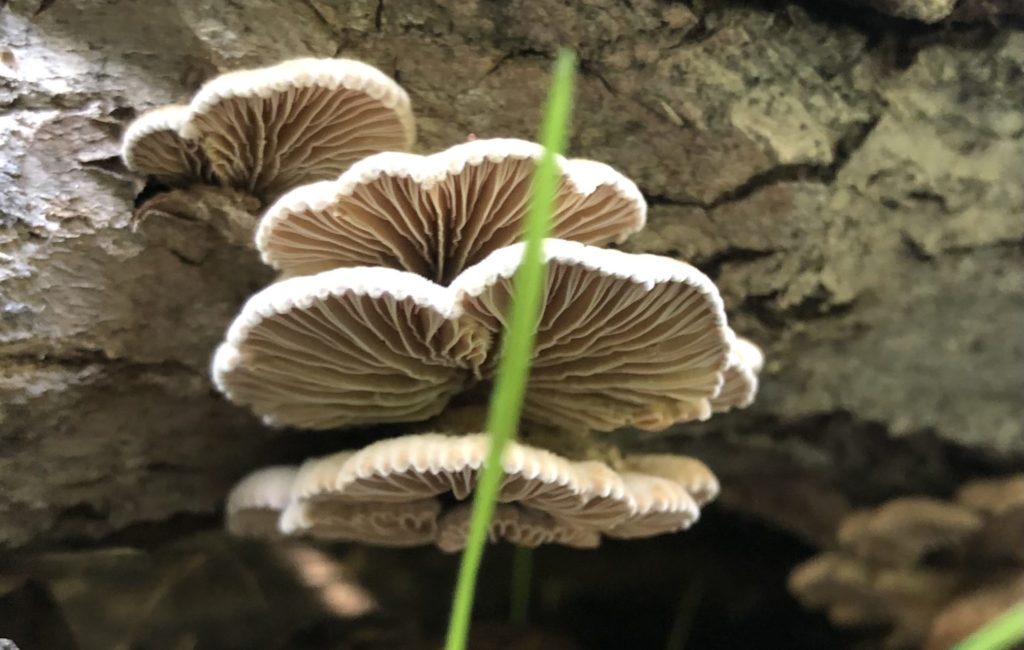
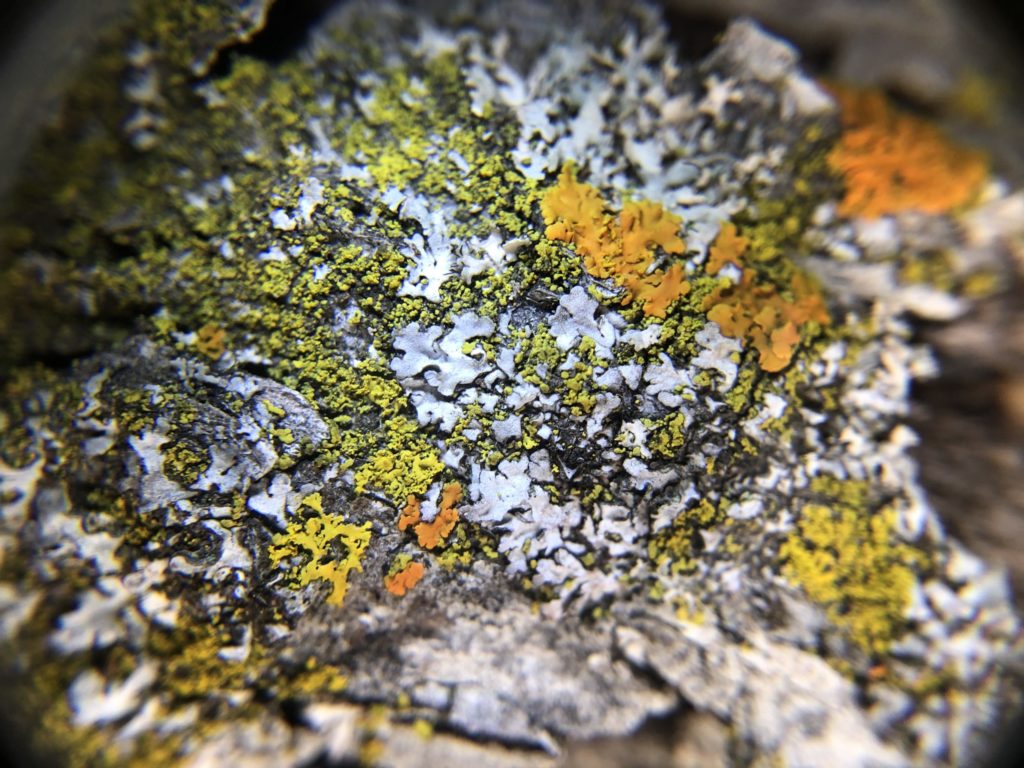
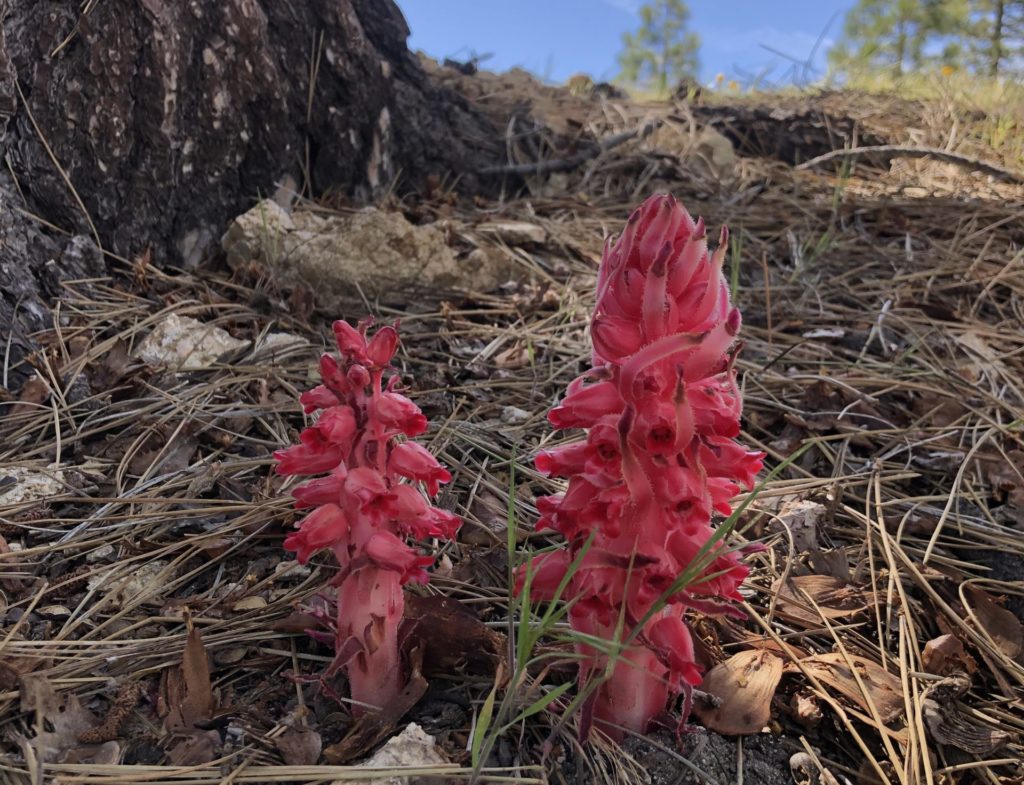
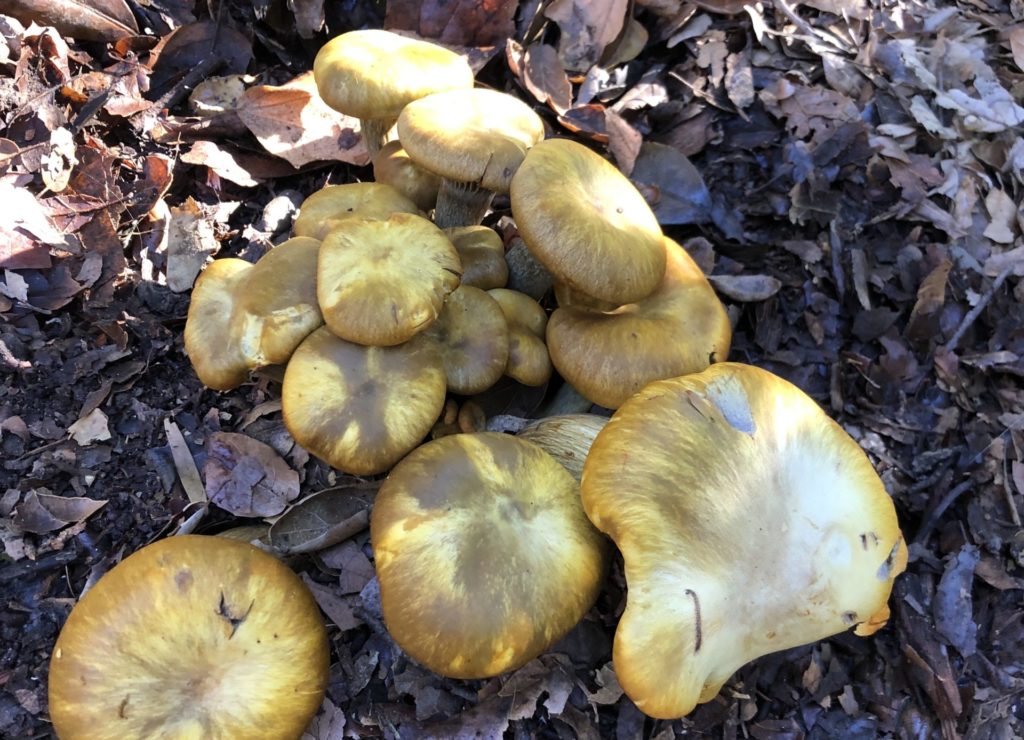

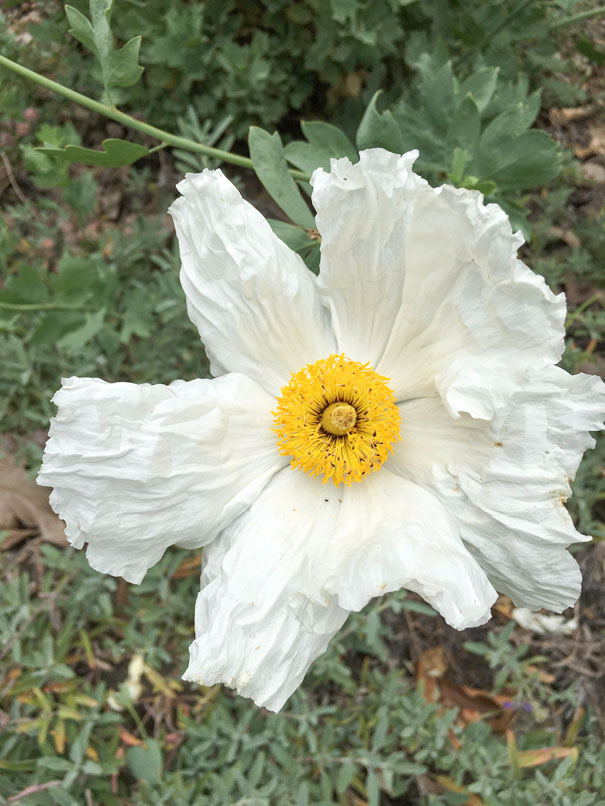
Recent Comments